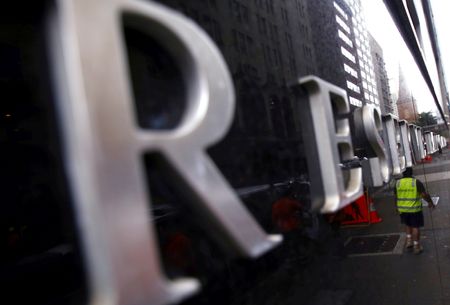SYDNEY, May 5 (Reuters) – Australia’s central bank on Friday warned that risks to inflation were on the upside given low productivity growth, rising energy prices and a surge in rents as population growth out paces all expectations.
In a quarterly Statement on Monetary Policy, the Reserve Bank of Australia (RBA) reiterated that interest rates might have to rise further to restrain inflation, having stunned markets this week with its 11th hike to 3.85%.
While the RBA believed inflation had peaked late last year at 7.8%, it was only projected to return to the top of its 2-3% target band by mid-2025. That was a slower path than in many other developed nations, and risks were leaning to the upside.
“Inflation could turn out to be more persistent if productivity growth remains weak, the high inflation environment leads to firms expanding margins as their costs ease, there is greater feedback between higher prices and wages than expected, or if rents increase by more than expected,” said the RBA in the 79-page report.
Markets are wagering this is the peak for rates in part due to renewed volatility in the U.S. banking sector, while a slim majority of economists polled by Reuters expect one final rate hike by September.
The RBA sees core inflation slowing to around 4.0% by the end of this year, from the current 6.6% pace, and to 2.9% by mid-2025, However, it cautioned that this slowdown was conditional on a recovery in productivity growth, which has disappointed for some years now.
Rent inflation was an increasing danger on the back of surging migration and would add “materially” to inflation in the next couple of years.
Higher gas and electricity prices would also add to inflation this year, and there was a risk firms would chose to expand their margins as costs eased, rather than cut prices.
“The longer inflation remains above target, the greater the risk that inflation expectations rise and price- and wage-setting behaviour might adjust accordingly,” said the RBA.
“If this were to eventuate, the end result would be even higher interest rates and a larger rise in unemployment would be required to bring inflation back to target.”
Annual wage growth is expected to pick up to a peak of 4.0% at the end of this year, compared with the previous forecast of 4.2%, before easing back to 3.7% by mid 2025.
The unemployment rate is expected to increase to 4.5% by mid-2025, from the current 3.5%.
All these forecasts are based on the technical assumption that interest rates peak at around 3.75% in mid-2023, before easing back to around 3% to June 2025.
(Reporting by Stella Qiu; Editing by Wayne Cole)
((yifan.qiu@thomsonreuters.com; 86-10-66271289;))
Keywords: AUSTRALIA RBA/BANKING





